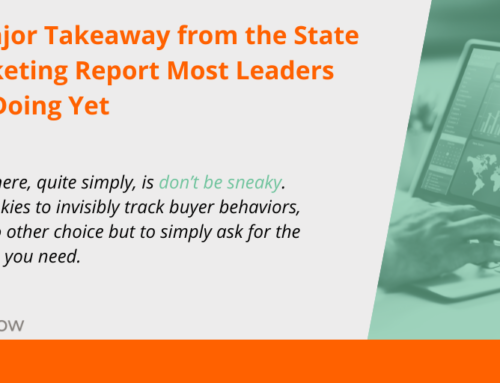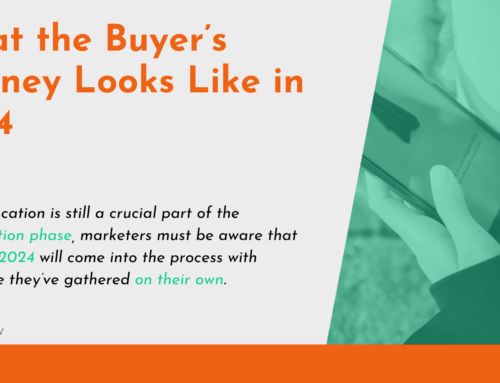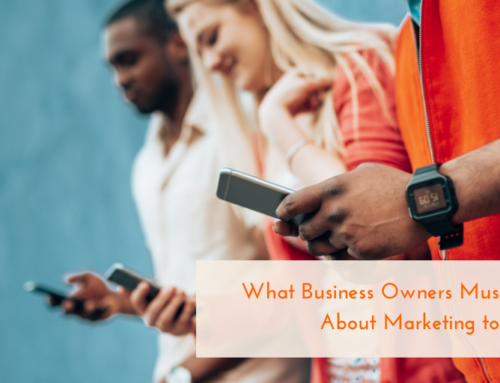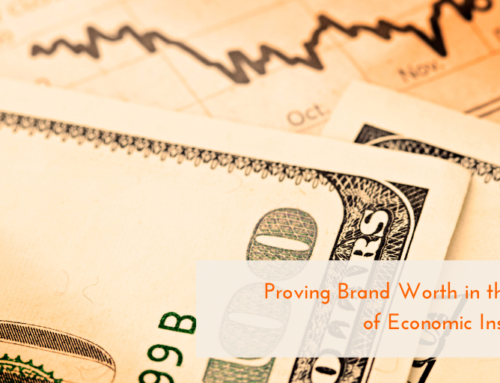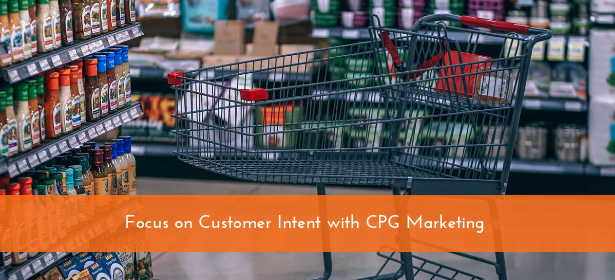
What changes have you made to your CPG marketing strategy in the last five years? What about the last three years? Are you still using the same marketing techniques that have worked for your brand for decades, only to see revenue slipping?
Technology has changed the way consumers discover, search for, and even buy the products they need (or want). Having a big-name brand is no longer enough, especially with the rise of private label products from retailers and entrepreneurs. Placing products in the store is no longer the best way to reach your buyers. In order to increase your sales, and your bottom line, you must consider customer intent in your marketing efforts.
Intentional Website Content
Consumers spend a lot of time seeking out content that helps them make decisions about what to buy. In fact, studies show that 47% of buyers will consume three to five pieces of content before making a purchase.
You know that your buyers are looking for content. They may be looking for content from your specific CPG brand. Where will they find it?
Video content has shown a staggering amount of growth, with consumers seeking out how-to videos and other content on YouTube, Instagram, Snapchat, and Facebook. What if that content also lived on your website? When consumers visit your site with the intent to make a purchase, they’ll find everything they could possibly need.
So, what do they need? What will help strengthen their intent to make a purchase?
- Recipe videos – Show them really cool ways to elevate your products through delicious new dishes.
- Social good videos – Prove to your buyers that you’re giving back, both locally and globally.
- Interactive videos – Give buyers a chance to discover more about their own tastes and how those might apply to your products.
- Sourcing videos – Take buyers to the very beginning and show them where your products come from.
These are all great ways to prompt a purchase from someone who might still be on the fence.
Intentional In-Store Experiences
Buyers aren’t just looking for videos to help them make decisions. They also want experiences that give them good vibes about the brands they’re considering. That’s why experiential marketing is on the rise, but it’s more than just experiences. Some experiential marketing campaigns were created to bring awareness to the brand, like Volkswagen’s piano stairs, or Red Bull’s annual Flugtag. As fun and popular as these may be, they take none of the customer’s intent into consideration.
Instead, if you want to provide experiences that will lead to a purchase, consider in-store demonstrations, cooking tutorials, or even free samples. If your brand has storefronts and not just a spot in the grocery store, you can get even more involved. Let buyers get hands-on with the opportunity to attempt new recipes themselves right there in your shop. Beauty brands can provide makeovers and consultations.
When you provide an experience that heightens intent, then you’re more likely to see the sales climb.
Blend Physical and Online Stores
It’s no secret that buyers like to shop around for the best deal. Showrooming—the practice of searching for items in a store and then going home to find it for a better price online—and reverse showrooming—finding something online and traveling to the physical store for a hands-on experience—are both on the rise. Make both obsolete in your stores by mixing the two and taking out all the guesswork for your buyers.
Allow buyers to search in stores for the products they want right there on their phones. Even better, provide kiosks with internet capability so your customers can see exactly what you have—and what you can have delivered. Of course, this works best if your brand has a storefront, but you can also introduce technology to various grocery stores and beauty outlets, too.
With the adoption of QR codes or push notifications, you can provide buyers with the prices they’re looking for the moment they get close to your products in the store. And if they can’t get what they’re looking for in the store, give them the opportunity to order right then and there, so they have no time to forget or get distracted before they can order at home.
The more intentional you can be with your marketing, the more likely you’ll be to assist customers who are ready to make a purchase. If we can help you with your CPG marketing needs, don’t hesitate to reach out.

